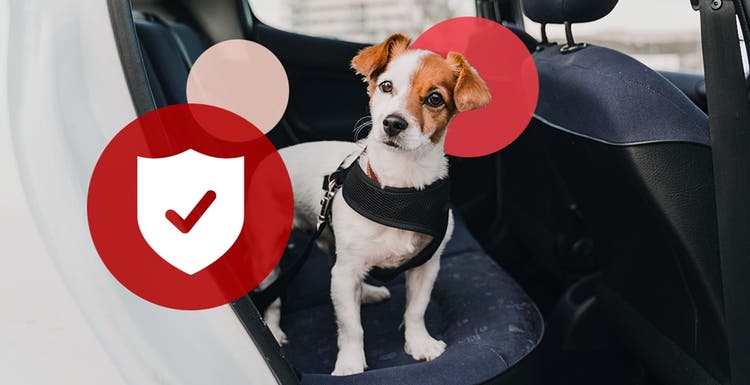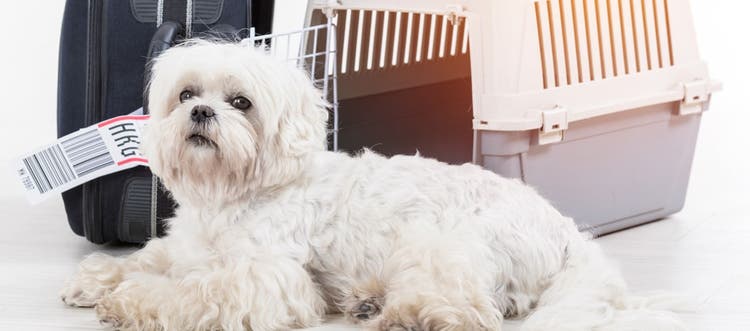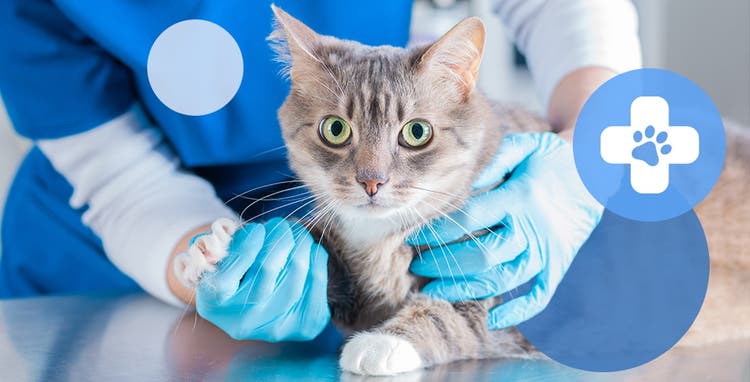The basics of traveling safely with your pet.
Our pets play a large part in our lives and we’d love to take them with us on all our vacations and trips. But in addition to keeping them safe and healthy, you’ll need to consider other logistics when traveling away from home with your pet.
While this can feel overwhelming, with good planning and organization, it’s possible to safely include your beloved dog or cat on many of your trips. These recommendations can help you get started.
1. Consider If the Trip Is in Your Pet’s Best Interests
The most important step in planning your trip is to think about your pet’s well-being. Travel can be stressful for animals as well as humans, so before you start planning, ask yourself some basic questions about your pet’s suitability:
- Is your pet easily stressed?
- Is your pet frail or senior?
- Does being in a crate or carrier cause your pet distress?
You know your pet better than anyone, and if you think the trip might be too much for them, it’s better to leave them behind.
Additionally, ensure that your itinerary will be pet-friendly from beginning to end. Check in advance that all hotels, airlines, ferries and car rental companies you plan to use allow pets. Don’t book any nonrefundable accommodations or services until you are sure your pet is welcome.
2. Know the Rules and Regulations for the Airport and Your Destination
Airports and government agencies typically have departments dedicated to travel regulations for pets. You may discover that you need to visit your vet before traveling to get copies of your cat’s or dog’s vaccination records, perform any necessary blood tests or get them additional vaccinations.
If you’re traveling abroad, you will need to research the rules and regulations of your destination country. Consider the following questions when planning your trip:
- Does the country require certain paperwork or permits for your pet?
- What vaccinations should your pet receive prior to entering the country?
- Has your pet been microchipped?
- What, if any, quarantine arrangements do you need to make?
- Is your pet or breed of dog banned from entering the country?
3. How Will Your Pet Travel with You?
If you plan to travel by plane or boat, you will most likely need to take your pet in a crate or carrier (certain exceptions apply to dogs on some shorter routes). This can present problems, particularly if your pet is not used to spending time in their carrier.
In the weeks and months leading up to your trip, take the time to acclimate your pet to their crate or carrier. Place your pet’s favorite toys or treats inside the crate or carrier to encourage them to see it as a safe place where they can rest or nap. If the crate or carrier will go in a cargo hold, make sure it has a waterproof bottom, adequate ventilation and a strong, secure lock. (For dogs, check out our comprehensive guide to crate training.)
If you’re traveling by plane, you will need to make sure your pet’s crate meets the Federal Aviation Administration (FAA) standards as well as International Air Transport Association (IATA) requirements if you’ll be outside the U.S.
4. Consider Bathroom Breaks and Rest Stops
If you’re traveling by car, make sure you’ve mapped out spots along your route for your dog or cat to relieve themselves.
It’s a good idea to allow your dog three to five bathroom breaks per day, but this may increase if your dog is nervous from riding in the car or has been drinking more water.
If you’re traveling with your cat, it’s a good idea to bring along food, litter and bowls that they’re familiar with. You can try to keep a small litter box in the crate with them or offer litter every few hours. Keep in mind that your cat may not want to go to the bathroom or drink water at all during a car trip and will wait until they’re situated at the final destination.
If your pet is traveling via plane or any other mode of transportation in which they’ll be separated from you, be certain their crate is big enough for your cat or dog to relieve themselves away from where they will sleep. Place a litter box or a puppy pad in a corner in their crate, making sure it’s secured and will not fall or slide onto your pet.
5. Understand the Health Risks of Traveling with Your Pet
Schedule a visit to your vet to discuss your pet’s general health and suitability to travel, as well as any tips and advice they can give. You may also want to research pet and animal hospitals near your destination, in case of emergencies.
Your pet may face different parasites at your final destination than they do at home, so make sure your vet recommends a product that will prevent or combat the common parasites your pet is likely to face on their travels, like fleas and ticks.
6. Stock Up on Pet Essentials
Make a list of everything your pet will need for the trip, and then head to the pet store. Some important items to consider include:
- A name tag (with mobile phone number)
- Travel water and food dishes
- A brush and grooming tools
- Food and treats
- One or two favorite toys
- A leash and harness for dogs
- Litter and a litter box suitable for travel for cats
- Any regular medications your pet will need
- A copy of your pet’s current medical records
- An old towel or sheet to cover hotel furniture
- A picture of your pet, in case they get lost
Traveling with your pet can be a stressful experience, but with the proper preparation and documentation, you can enjoy a worry-free vacation with your family and your pets.









